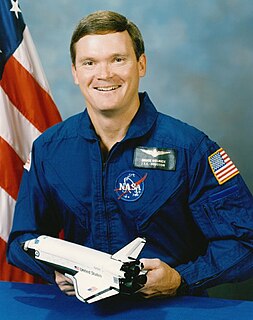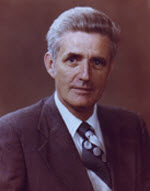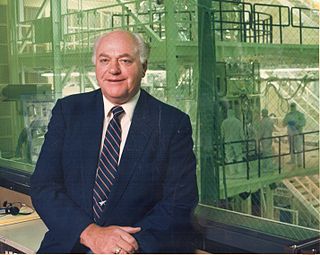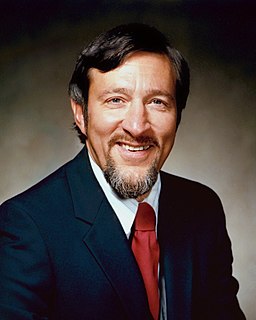Related Research Articles

Systems engineering is an interdisciplinary field of engineering and engineering management that focuses on how to design, integrate, and manage complex systems over their life cycles. At its core, systems engineering utilizes systems thinking principles to organize this body of knowledge. The individual outcome of such efforts, an engineered system, can be defined as a combination of components that work in synergy to collectively perform a useful function.

Lockheed Martin Corporation is an American aerospace, defense, arms, security, and advanced technologies company with worldwide interests. It was formed by the merger of Lockheed Corporation with Martin Marietta in March 1995. It is headquartered in North Bethesda, Maryland, in the Washington, D.C., area. Lockheed Martin employs approximately 110,000 people worldwide as of January 2020.
Tom Gilb is an American systems engineer, consultant, and author, known for the development of software metrics, software inspection, and evolutionary processes.

Bruce Edward Melnick is a retired American astronaut and United States Coast Guard officer. Following retirement from NASA and the Coast Guard, he entered the aerospace industry. He served as a Vice President with the Boeing Co.'s Integrated Defense Systems group, in charge of Boeing's Florida operations at the John F. Kennedy Space Center (KSC). Melnick retired in 2008 and currently resides on Merritt Island, Florida.

The V-model is a graphical representation of a systems development lifecycle. It is used to produce rigorous development lifecycle models and project management models. The V-model falls into three broad categories, the German V-Modell, a general testing model and the US government standard.
Lockheed Martin Space is one of the four major business divisions of Lockheed Martin. It has its headquarters in Denver, Colorado with additional sites in Sunnyvale, California; Santa Cruz, California; Huntsville, Alabama; and elsewhere in the US and UK. The division currently employs about 16,000 people, and its most notable products are commercial and military satellites, space probes, missile defense systems, NASA's Orion spacecraft, and the Space Shuttle external tank.

The International Council on Systems Engineering is a not-for-profit membership organization and professional society in the field of Systems engineering. INCOSE has about 17000 members including individual members, corporate members and student members. INCOSE's main activities include its conferences, publications, local chapters, certifications and technical working groups.
Byrana Nagappa Suresh is an Indian aerospace scientist. He is presently the Chancellor, Indian Institute of Space Science and Technology, IIST at Thiruvanthapuram and Honorary Distinguished Professor at ISRO HQ. He was President Indian National Academy of Engineering, INAE at Delhi, which is a premier engineering Academy in the Country for four years during 2015 to 2018. He served as the Director of Vikram Sarabhai Space Centre (VSSC), Thiruvananthapuram during the period 2003–2007. He is known for his contribution to the development of Indian launch vehicles, Space Capsule Recovery Experiments (SRE) and also for R& D management. Suresh also served as the founding director of Indian Institute of Space Science and Technology (IIST), Thiruvananthapuram. He retired from IIST in November 2010. He was Vikram Sarabhai Distinguished Professor at ISRO HQ for 5 years since November 2010 and also as distinguished professor at IIT, Mumbai and MIT, Manipal for 3 years. He was a member of the board of governors (BOG) for IIT, Madras for 7years till july 2018. He is also chairman of the governing council for MVJ College of Engineering at Bangalore. He is the vice chair for the Design Division of Aeronautical Society of India. He is one of the associate editors of the book From Fishing Hamlet To Red Planet and a co-author of Ever Upwards: ISRO in Images, both tracing the history of Indian Space Research Organisation.
Lawrence (Larry) K. Edwards was an American innovator in aerospace and ground transportation. Early in his career, he pioneered technologies for U.S. space and missile defense programs. He went on to invent and promote high-speed Gravity-Vacuum Transit and monobeam rail transit. He obtained a total of 14 patents in those areas.

Walter Barber LaBerge (1924–2004) was an aerospace engineer and defense industry executive who served as United States Under Secretary of the Army from 1977 to 1980.
A brassboard or brass board is an experimental or demonstration test model, intended for field testing outside the laboratory environment. A brassboard follows an earlier prototyping stage called a breadboard. A brassboard contains both the functionality and approximate physical configuration of the final operational product. Unlike breadboards, brassboards typically recreate geometric and dimensional constraints of the final system which are critical to its performance, as is the case in radio frequency systems. While representative of the physical layout of the production-grade product, a brassboard will not necessarily incorporate all final details, nor represent the physical size and quality level of the final deliverable product.

Steven Patrick Chappell is an American aerospace engineer. He is a Technical Lead & Research Specialist for Wyle Integrated Science & Engineering at NASA's Johnson Space Center (JSC) in Houston, Texas. He is helping to define and execute the research needed to optimize human performance in next-generation spacesuits and extra-vehicular activity (EVA) systems. Chappell served as an aquanaut on the NASA Extreme Environment Mission Operations 14 crew.
Richard C. Scherrer (1919–2018) was an aircraft designer notable for pioneering work on revolutionary aircraft designs with extremely low radar cross sections that led to the Lockheed F-117 Nighthawk and Northrop Grumman B-2 Spirit.

Bertram Raoul Bulkin was an American aeronautical engineer who participated in the first United States photo-reconnaissance satellite programs and is best known for his role in building the Hubble Space Telescope.
INCOSE Pioneer Award is an annual prize for people who have made significant pioneering contributions to the field of Systems Engineering given by the INCOSE since 1997.
Harold (Hal) Mooz is an American systems engineer, business consultant and founder and CEO of The Center for Systems Management, Inc., awarded the INCOSE Pioneer Award in 2001.

Andrew John Stofan is an American engineer. He worked for the National Aeronautics and Space Administration (NASA) at the Lewis Research Center. In the 1960s he played an important role in the development of the Centaur upper stage rocket, which pioneered the use of liquid hydrogen as a propellant. In the 1970s he managed the Atlas-Centaur and Titan-Centaur Project Offices, and oversaw the launch of the Pioneer 10 and Pioneer 11 probes to Jupiter and Saturn, the Viking missions to Mars, Helios probes to the Sun, and the Voyager probes to Jupiter and the outer planets. He was director of the Lewis Research Center from 1982 to 1986.

John R. Casani is an American engineer. He worked for the National Aeronautics and Space Administration (NASA) at the Jet Propulsion Laboratory, where he managed the Voyager, Galileo, Cassini and Prometheus projects.
References
- 1 2 Kevin Forsberg biography at incose.org. Accessed October 1, 2013
- 1 2 INCOSE Pioneer Award
- ↑ NASA SP. Scientific and Technical Information Office, National Aeronautics and Space Administration [available from National Technical Information Service, Springfield, Va. 1962. p. xii